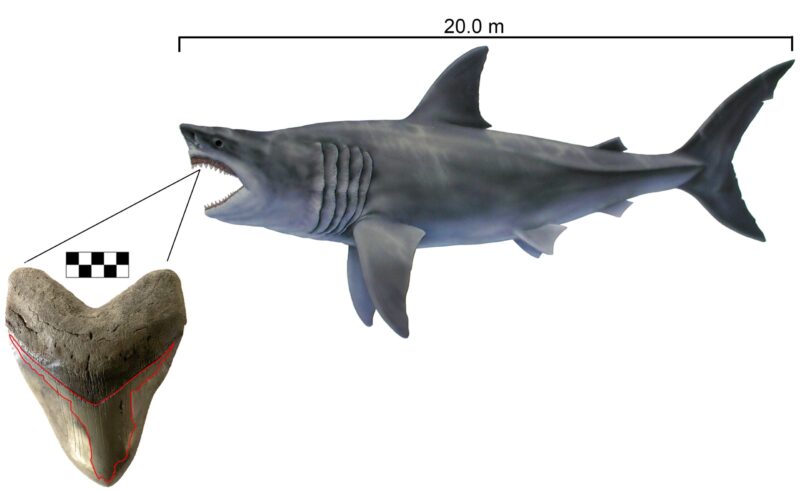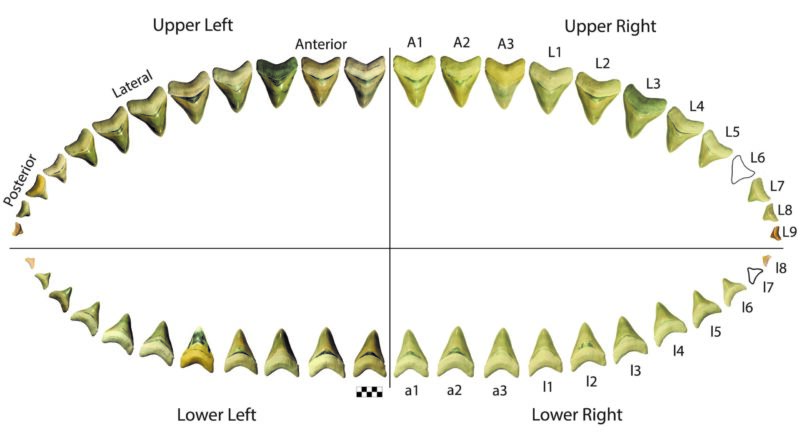
For more than 100 years, people have been debating the size of the extinct megatooth shark, Otodus megalodon. This macropredator has captivated the interest of researchers and the public alike, with its enormous, blade-like teeth. While it is often regarded as the largest shark to ever live, what evidence is available to substantiate this massive claim?
To date, a complete skeleton of Otodus megalodon has not been recovered, so we cannot simply measure the length of the shark. The fossil record of megatooth sharks is predominantly comprised of isolated teeth and rare vertebral centra, which has been the basis for all previous methods for estimating body length. However, a recent study tested the accuracy of popular methods for estimating body length, using the most complete fossil evidence available—associated fossil dentitions (Figure 1). These are extremely rare sets of teeth that each came from one individual. The study found a distinct pattern, in which anterior teeth resulted in smaller body length estimates than posterior teeth, implying that previous studies that have analyzed body size trends in megatooth sharks are biased by which tooth positions were used in the analysis.
To account for this potential bias, a novel method for estimating body size was proposed, based on the summed width in associated fossil dentitions. In many living sharks, there is a precise relationship between the width of the jaws and the length of the shark. The new method assumes that the ratio of summed width to total body length (TL) is proportional in the living great white shark, Carcharodon carcharias, and the extinct megatooth shark, Otodus megalodon (Figure 2). Thus, there are four variables, of which three can be measured and the fourth can be calculated. This method provides significantly greater constraint on the resultant body length estimates than previous methods.
The method was applied to 11 associated fossil dentitions, belonging to five different species: Otodus megalodon (extinct), Otodus chubutensis (extinct), Carcharodon hastalis (extinct), Carcharodon hubbelli
(extinct), and Carcharodon carcharias (living). These five species were apex predators in shallow marine environments over the past 23 million years. To calculate a maximum body size, the method was extrapolated for the largest known isolated tooth of Otodus megalodon by relating it to the largest associated dentition (Figure 3). This resulted in a maximum body length estimate of 20 m (=65.6 ft).
Explore how the prehistoric past, natural environments, and maritime heritage come to life and tell a unique story of the Chesapeake Bay. The Calvert Marine Museum is open daily from 10 a.m. to 5 p.m., with limited capacity and a new timed entry system. Admission is $9 for adults; $7 for seniors, military with valid I.D, AAA and AARP members; $4 for children ages 5 – 12; children under 5 and museum members are admitted free. For more information about the museum, or to make a reservation for your next visit, please go to our website at www.calvertmarinemuseum.com. Keep up to date with the latest from CMM by following us on Facebook, Instagram, Twitter, and YouTube.





